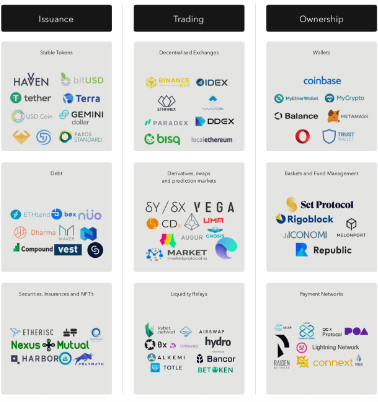By relying on historical data, technical analysis has become a widely-used approach to examining the movement of cryptocurrency prices. It entails utilizing technical indicators and chart patterns to detect trends and anticipate future price fluctuations. Familiarizing oneself with essential principles and effective strategies empowers traders to employ technical analysis in cryptocurrency trading and make knowledgeable decisions regarding buying, selling, and mitigating risk.
Introduction to Technical Analysis for Cryptocurrency Trading
By analyzing market data, such as charts and trading volume, technical analysis is a technique utilized to evaluate the movement of cryptocurrency prices. Technical analysts believe that past price and volume data can give insight into future price movements.
Cryptocurrency traders who utilize technical analysis often search for trends and patterns in the data, including support and resistance levels, moving averages, and chart formations. Technical indicators like Relative Strength Index (RSI) and Moving Average Convergence Divergence (MACD) are also used to recognize potential trading opportunities.
Although technical analysis can be beneficial to cryptocurrency traders, it should be combined with other analysis methods, such as fundamental analysis and market sentiment, as it is not infallible.
Understanding Key Technical Analysis Concepts
Mastery of fundamental technical analysis concepts, including support and resistance levels, trends, chart patterns, and technical indicators, is crucial for traders seeking to use this approach in cryptocurrency trading. Support and resistance levels refer to points where buying or selling activity is expected to be intense. Trends, encompassing uptrends, downtrends, and sideways trends, describe the general direction of price movement over time. Chart patterns, like triangles, head and shoulders, and flags, can indicate potential price changes. Technical indicators, such as Bollinger Bands, Relative Strength Index (RSI), and moving averages, utilize mathematical calculations to analyze volume and price data and offer trading signals. By thoroughly comprehending these technical analysis concepts, traders can spot trading opportunities and make well-informed decisions.
Identifying Trends and Patterns in Cryptocurrency Price Charts
Observing trends and patterns in cryptocurrency price charts is a crucial aspect of technical analysis. Traders can identify the general direction that the cryptocurrency’s price is moving, either upwards (bullish) or downwards (bearish), by observing its price movements over a specific period. Chart patterns such as support and resistance levels, head and shoulders, triangles, and double tops and bottoms can also provide valuable insights for traders. These patterns are used by technical analysts to make predictions about future price movements and identify potential trading opportunities. However, it is important to note that trends and patterns should be used in combination with other analysis methods, such as technical indicators and fundamental analysis, as they are not always reliable indicators of future price movements.
Managing Risk and Setting Stop Losses with Technical Analysis
The use of technical analysis can assist traders in minimizing risk and establishing appropriate stop losses while trading cryptocurrency. Stop losses are predetermined price levels at which traders exit a trade to curb potential losses. By detecting critical support and resistance levels, technical analysis enables traders to place stop losses right below support levels or above resistance levels. Moreover, technical indicators like RSI can aid in identifying oversold or overbought conditions, signaling a possible shift in price direction. By establishing stop losses based on technical analysis, traders can cap their losses in the face of unforeseen market movements, thus proficiently managing risk and conserving capital.
Integrating Fundamental Analysis with Technical Analysis for Cryptocurrency Trading
A powerful strategy for cryptocurrency trading is to integrate fundamental analysis with technical analysis. Technical analysis focuses on price movements and chart patterns, while fundamental analysis examines underlying factors that can impact a cryptocurrency’s value, including market trends, adoption rates, and regulatory changes.
When traders combine these approaches, they gain a more comprehensive understanding of the cryptocurrency market and can make more informed trading decisions. For example, if technical analysis shows a cryptocurrency entering a bullish trend, a trader might consider fundamental factors, such as the project’s development team’s strength and adoption rate, to confirm the trend’s sustainability.
Integrating fundamental analysis with technical analysis can aid traders in identifying potential long-term investments and managing risk in the volatile cryptocurrency market.
Tips and Best Practices for Effective Technical Analysis in Cryptocurrency Trading
To optimize the utility of technical analysis in cryptocurrency trading, traders must abide by best practices and incorporate essential tips. They must possess a thorough understanding of technical analysis tools and indicators applicable to cryptocurrency trading. Additionally, traders must adhere to disciplined trading strategies and abstain from impulsive decision-making. To keep up with the dynamic market, it’s imperative to stay abreast of relevant news and events that can influence cryptocurrency prices. Continual monitoring of trades and adjustments to strategies as market conditions evolve is also essential. By incorporating these best practices and tips, traders can make well-informed decisions and boost their success rate in cryptocurrency trading.
Conclusion
To sum up, technical analysis is a crucial resource for traders in the cryptocurrency market as it facilitates informed decision-making and risk management. With a grasp of key concepts such as support and resistance levels, trends, chart patterns, and technical indicators, traders can detect potential trading prospects and establish suitable stop losses. Traders can enhance their technical analysis skills by constantly learning through online sources, participating in workshops and seminars, and analyzing market data. By consistently refining their abilities and keeping up with market trends, traders can increase their success rate and achieve higher profitability in cryptocurrency trading.







